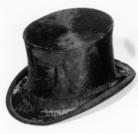A Review of the Historical Novel, Plews, by Arley L. Dial
 When demand
for beaver hats decimated beaver populations in Europe, traders turned to
the New World. Here the pelts were called “plews,” from the Canadian French,
“pelu,” meaning hairy. In 1825 the Rocky
Mountain plew trade was organized south of the Platte River around a business
model called the rendezvous scheme. But
in 1819, the evident year of, “Plews, ” a novel by Arley L. Dial, the fur trade
in America was still dominated by the Upper Missouri trade, as it had been for
a hundred years, controlled by companies in the east.
When demand
for beaver hats decimated beaver populations in Europe, traders turned to
the New World. Here the pelts were called “plews,” from the Canadian French,
“pelu,” meaning hairy. In 1825 the Rocky
Mountain plew trade was organized south of the Platte River around a business
model called the rendezvous scheme. But
in 1819, the evident year of, “Plews, ” a novel by Arley L. Dial, the fur trade
in America was still dominated by the Upper Missouri trade, as it had been for
a hundred years, controlled by companies in the east.
It was a pregnant moment. Business was just recommencing after the War of 1812. Steamboats, navigating the Mississippi since 1811, were turning St. Louis into a major trading city. Missouri was just a few years from statehood. The panic of 1819, instigated by the production of India cotton, which brought on a collapse of cotton prices, which created a liquidity problem at the Second United States Bank, caused money to disappear. Desperate men sought desperate means, and poaching into the Upper Missouri trade looked attractive.
Mister Dial has written a rough and tumble account of an expedition, from St. Louis to the Missouri headwaters, to trap beaver and trade with the Piegan Indians, a southern branch of the Blackfoot nation. His carefully researched yarn unspools in a believable evocation of the era. Readers may be surprised to learn that the Mandan Indians practiced agriculture, including cultivation of corn and vegetables. We glimpse them, and others, just before the plains wars, and white-man diseases, drove them into extinction, or onto reservations. The Mandan were devastated in 1819 by measles and whooping cough.
Mr. Dial takes us into the era through the eyes of his characters, a believable collection of seasoned mountaineers, boatmen, green horns, sadists, cowards, heroes, sea pirates, misfits, traitors, opportunists, and even a free black man, mixed in with various indigenous people rendered surprisingly human rather than as Hollywood cutouts. They forge an intriguing improvisation of struggles, failures and successes.
We see boatmen laboring against the spring floods to get a keelboat upriver. Others of the group march along the banks with a band of horses and mules, hunting and meeting exotic animals. Mr. Dial gives us one of the most convincingly horrible bad men ever to populate the American frontier, and his evil scheme, half business, half personal, haunts the band of trappers to the climax.
The youth of some characters, one boy is only fifteen, and some are barely sixteen, is true to the times. At sixteen Abraham Lincoln operated a private ferry service on the Mississippi and at nineteen he took a barge of trading goods down to New Orleans. A contemporary, Lewis H Garrard, went down the Santa Fe Trail at seventeen with some Rocky Mountain traders, and lived to write a book about it.
Mr. Dial is at his absolute best in the wilderness of the Three Forks area as the climax comes amid Indian attacks, treachery, cruelty and triumph. We struggle with the characters through hair-raising battles, winter storms, grizzly encounters, ambushes, numbing calamities and death. One of the survivors, a sixteen year old we meet at the beginning of the book, becomes, by the end, a man with mountains in his veins.

Back to Independent Authors